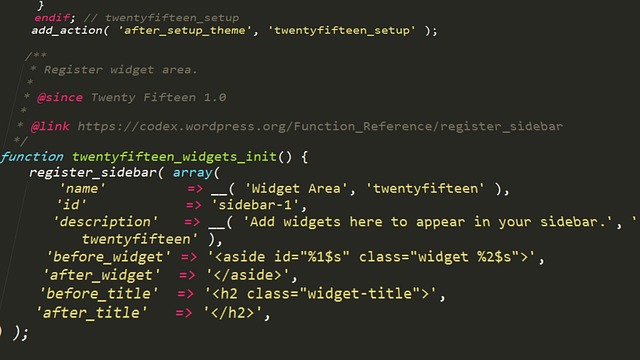How to better accommodate the ever-changing needs of software development processes while still ensuring efficiency? Does Agile Development provide the necessary balance for software evolution to take place successfully? To what extent can Agile software development ensure software development that is both comprehensive and efficient?
Organizations today are increasingly looking to agile development models to improve their software development process. These models seek to improve the speed and agility of development by combining elements of traditional and lean agile development to create an efficient process. However, the need to continuously evolve software further complicates the development process. Increasingly, organizations are turning to agile software development models to facilitate software evolution and ensure that it remains agile and efficient. Studies have shown that software development projects using agile development models are not only faster but also more cost-effective compared to traditional software development approaches (Achahbar et al, 2017;Torkzadehmahani et al, 2019).
In this article, you will learn how agile software development can facilitate software evolution and how organizations can apply agile development principles to ensure software development projects are completed effectively and efficiently. You will also gain insight into the various challenges involved in agile software evolution and the ways organizations can address them. Finally, the article will discuss the best practices organizations can follow to ensure agile software evolution is successful.
Ultimately, agile software development offers many advantages to organizations looking to develop software quickly and efficiently. By better accommodating the ever-changing needs of software development, agile models can ensure that software evolves effectively and efficiently. This article will provide insight into how organizations can leverage agile software development models to facilitate software evolution.
Definitions
Agile development is an iterative approach to software development that has been designed to provide a streamlined framework for teams to quickly deliver high-quality software. It seeks to break up large projects into smaller pieces, and to provide quick feedback to teams, so that they can rapidly improve the overall quality of the project.
At the core of agile development is the idea of evolution—developers constantly look for ways to improve their code. This involves conducting regular reviews of the product, allowing developers to make changes quickly, without having to go through lengthy and costly processes. This reactive approach to development allows for speedy and efficient iterations of software.
Another key concept in agile development is that of continuous integration. This means that changes to the code base are tested and integrated into the main codebase on an ongoing basis. This eliminates the need for lengthy code reviews, and ensures that changes are tested right away, allowing for faster feedback and iteration.
Finally, the concept of engineering practices is at the heart of agile development. This involves applying engineering principles such as testing and automation, and using version control systems to store and track changes to the codebase. This allows developers to quickly and easily make improvements to the software, without having to go through long and complicated processes.
Flexibility of Agile Development
Agile Helps Absorb Change
Agile methodology encourages a high level of flexibility with the end goal of enabling software development teams to quickly and efficiently absorb change. With Agile, software teams are encouraged to continually analyze requirements and prioritize tasks. Agile processes rely heavily on the use of empirical feedback to adjust and adjust task priorities depending on the progress of the individual tasks. Iterative development cycles with frequent feedback and collaboration help to ensure that development teams are able to quickly respond to changes in the original requirements and deliver valuable software solutions on time.
In addition to permitting more efficient adaptation of requirements, Agile development helps software teams to embrace change itself. Unlike traditional development approaches that focus extensively on rigid budget and timeline constraints, Agile encourages lighter processes and creative approaches that prioritize problem-solving. By shifting development focus away from overly strict requirements, teams can start to experiment and try out different problem-solving techniques and take creative risks without the looming fear of massive cost overages or schedule disruptions.
Scalable Solutions through Agile
Agile methodology is also very helpful in producing scalable software solutions that can easily manage a variety of changing requirements. The agile software development process is built on a modular approach that allows development teams to break down large projects into smaller, more manageable tasks. These tasks can be individually tested and adapted to changing needs, allowing the entire solution to evolve with relative ease.
This process is also very helpful when it comes to working with a wide range of stakeholders. Agile facilitates communication between various stakeholders to ensure that expectations are continually managed during the entire development process. It also helps keep software teams focused, ensuring that each task delivers value in terms of addressing the changing needs of their users.
Reap the Benefits of Agile Development
Agile software development is a powerful way for rapidly evolving businesses to build and maintain software systems that can manage their ever-changing needs. It helps teams quickly and efficiently process new project requirements and adjust priorities as needed. By embracing the highly flexible nature of Agile development, software teams can take creative risks and develop scalabe solutions that provide maximum value for their customers.
- Agile helps absorb change.
- Scalable solutions are created with Agile.
- Agile facilitates communication between stakeholders.
Increasing Software Reusability
Start Writing!
Definition of Agile Development
Agile development is a framework that emphasizes collaboration, iteration, and flexibility throughout the software development process. Its goal is to provide customers with high quality software quickly and efficiently by adapting to changing requirements. This method is becoming increasingly popular with software developers, as it allows for efficient delivery of products within a shorter period of time with greater customer satisfaction.
Facilitation of Software Evolution
Agile software development can facilitate the evolution of software over time. By using iterative development, software projects can break up tasks into smaller pieces, allowing for incremental and iterative delivery of products with customer feedback at each step. This method encourages software developers to incorporate customer feedback, making the software more customer centric and increasing the likelihood of success. Additionally, by using iterative development, software teams can adapt quickly to changes in customer requirements, leading to an agile implementation that is tailored to customer needs.
Furthermore, agile methodologies can also lead to improved code reuse, as developers are able to quickly reuse existing code within new application frameworks. This not only reduces development time and effort, but also results in better quality code. Additionally, the reuse of existing code can help facilitate the maintenance and evolution of existing software products as well as the development of new ones.
Finally, agile software development also allows for greater scalability and adaptability when it comes to the implementation and deployment of applications. With agile development, there is no one-size-fits-all solution to a problem; developers have the flexibility to choose from a variety of solutions depending on the customer’s requirements. This increased flexibility also leads to improved scalability and reliability of an application.
Overall, agile software development helps to facilitate software evolution by speeding up delivery timeframes, encouraging customer feedback, and enabling code reuse and improved scalability. All of these combine to create a process that is flexible and adaptive to customer needs with improved software quality and reliability.
Scalability and Adaptability
Agile development is a software development methodology that focuses on iterative, collaborative and incremental development of software systems. The aim is to produce high-quality software quickly and efficiently, without taking too much risk. This approach has put a paradigm shift in the software industry, making software more effective and manageable.
Rapid Delivery & Quality Improvement
Agile development methodology, based on incremental software development, allows software projects to be developed more quickly. It enables a more rapid delivery of the software than traditional methods (waterfall model). This improved delivery frequency helps in making quicker decisions and adapting to changing needs at a faster pace. This has led to improvements in product quality and hence better user satisfaction.
Scalability & Adaptability
The agile methodology provides flexibility and scalability in software development. Adaptive planning, evolutionary development, early delivery, and continual improvement are some of the key processes in agile which enable scaling and adapting to changing environment. It enables teams to respond quickly to business requirements and customer feedback. Agile methodologies also enable teams to scale quickly and respond to changing software needs quickly. This is important in order to ensure the homogeneity of software implementations across an organization.
The iterative and incremental nature of the agile methodology enables teams to quickly build upon, improve, and modify existing software systems. This makes it much easier for developers to create software that can be quickly extended and changed when needed. The iterative nature of agile also allows for rapid experimentation and feedback with users or customers, which helps with making sure that the product meets the user’s needs.
Overall, agile methodologies make the process more flexible, iterative, and incremental that increases its scalability, and enables teams to quickly change and extend existing software systems when needed. This helps produce high-quality software systems quickly without taking too much risk.
Conclusion
Agile development has enabled software development teams to build software faster and more efficiently by removing many of the traditional roadblocks to rapid release cycles and ongoing maintenance. By promoting iteration and incremental delivery, agile development has allowed software teams to continuously improve their product and to respond to customer and market demands in a much more rapid fashion. Through embracing agile development, software projects have come to represent ongoing processes of evolution, as opposed to one-off releases.
If you’re interested in learning more about how agile development can facilitate software evolution, make sure to check back with our blog; we’ll be posting new content about this subject regularly.
Q1: What is Agile Software Development?
Agile software development is a methodology of delivering software solutions that focuses on continual improvement and feedback. It emphasizes the collaboration between developers, customers, and other stakeholders throughout the process so that changes can be implemented quickly and customer satisfaction is maintained.
Q2: How Does Agile Software Development Facilitate Software Evolution?
Through its iterative and incremental approach, agile development facilitates software evolution by allowing for frequent feedback and changes, as well as quick release cycles. This enables software teams to rapidly respond to customer and market demands while also continuously improving their product over time.
Q3: What are the Benefits of Agile Software Development?
One of the main benefits of agile software development is its efficiency – teams are able to build high-quality software faster and have more control over maintenance and revisions. By involving customer feedback and stakeholders throughout the process, agile software development also helps to ensure customer satisfaction.
Q4: What Tools are Used for Agile Software Development?
Software developers may use a variety of tools for agile development, including project management tools, version control systems, and collaborative platforms. Popular tools include Jira, VersionOne, and Assembla.
Q5: What Resources Can I Use to Learn More About Agile Software Development?
There are numerous resources available for those wishing to learn more about agile software development, including online tutorials, books, and instructional videos. Additionally, many software companies offer agile development certification programs that can provide an in-depth understanding of agile development techniques and best practices.



